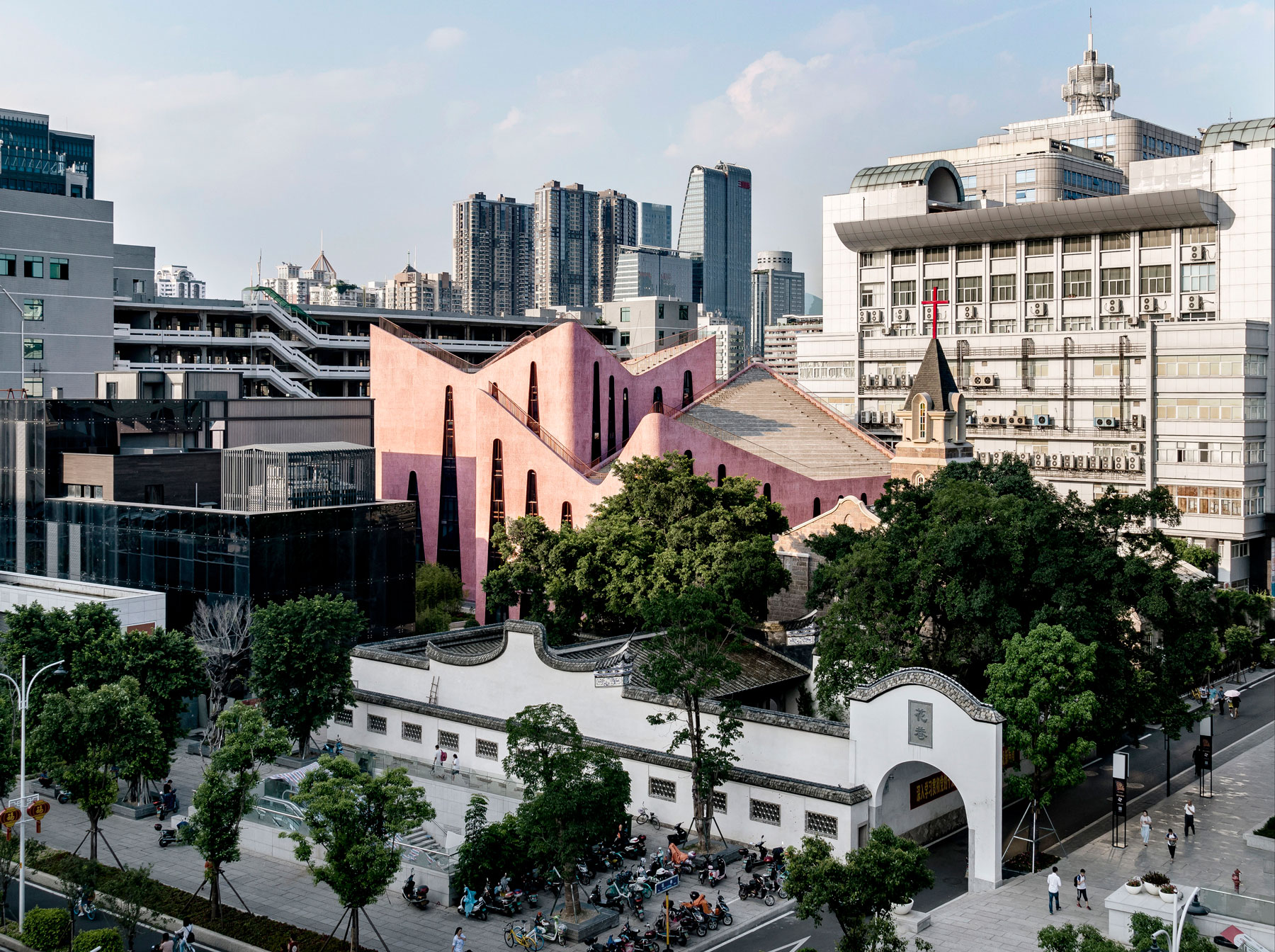
HUAXIANG CHRISTIAN CENTRE | INUCE – DIRK U. MOENCH
Fuzhou, China
Repression and Rebirth: A Christian Minority in a Typical Chinese City
Description provided by INUCE – Dirk U. Moench. When Fuzhou’s Huaxiang Church was built in 1938, its steeple was the only vertical structure emerging from an ocean of traditional Ming-style residences. Since then its congregation became witness of the radical transformations in city and society: From decades of urban deterioration to an unprecedented era of prosperity and development; from the complete suppression of religious activity during the Cultural Revolution to a miraculous ten-fold growth of the number of Christians in the years since. Today, the little building finds itself at the bottom of a veritable maze of shopping malls and office blocks. In dire need for additional space, the congregation decided to build a supporting community centre on a plot of land adjacent to the historical building.
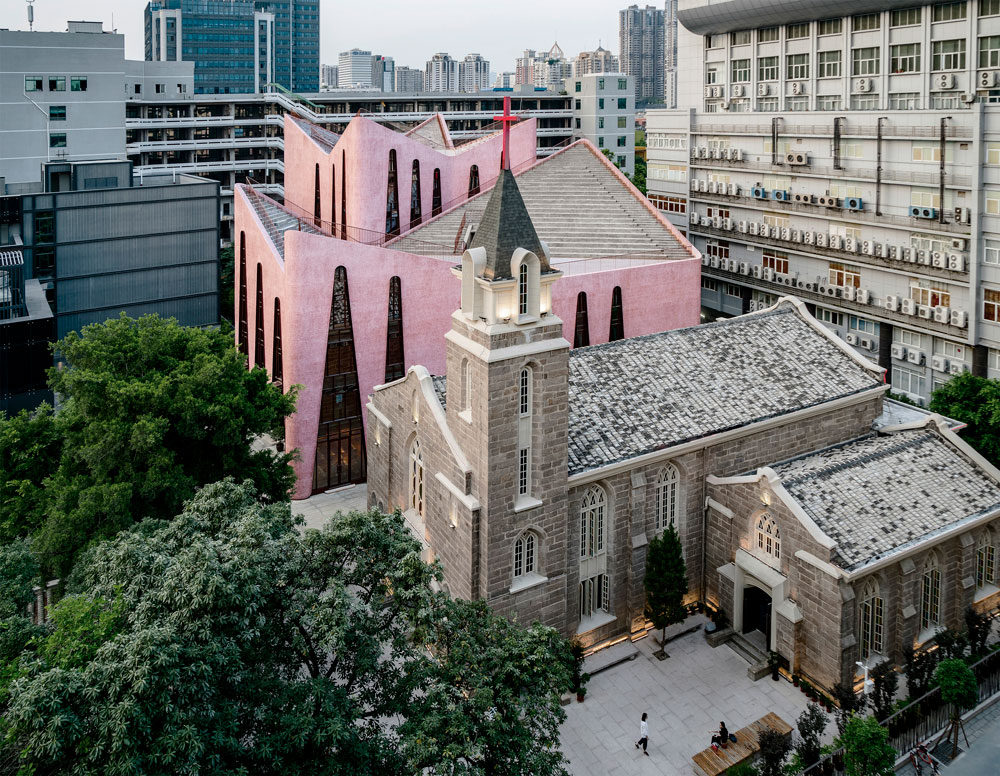
A Church For the Eye of the Storm: Conflicts and Contradictions of Place and Brief
The challenges imposed on the project were indeed extraordinary: Firstly, the client’s functional and spatial requirements were conflicting with the height and area restrictions imposed by the heritage authority on this small plot of land. Secondly, the isolated character of the site – surrounded by obstacles on all sides – determined that only upper levels would be visible from the public street nearby. Thirdly, the immediate adjacency of the new building to its historic counterpart, in the midst of an uncommunicative set of buildings high and low, modern and traditional, Eastern and Western, demanded a clear attitude regarding the relationship of old and new architecture.
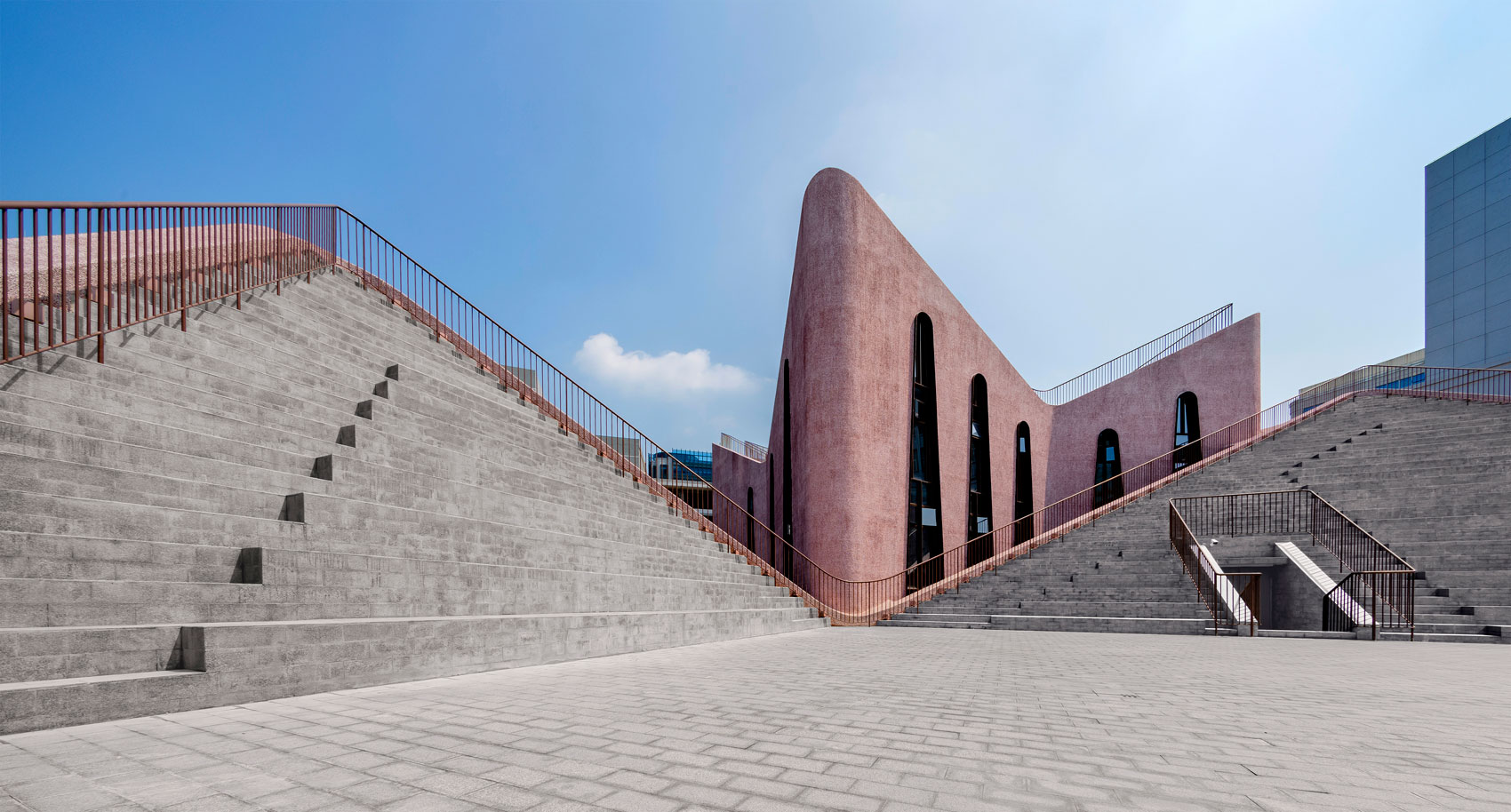
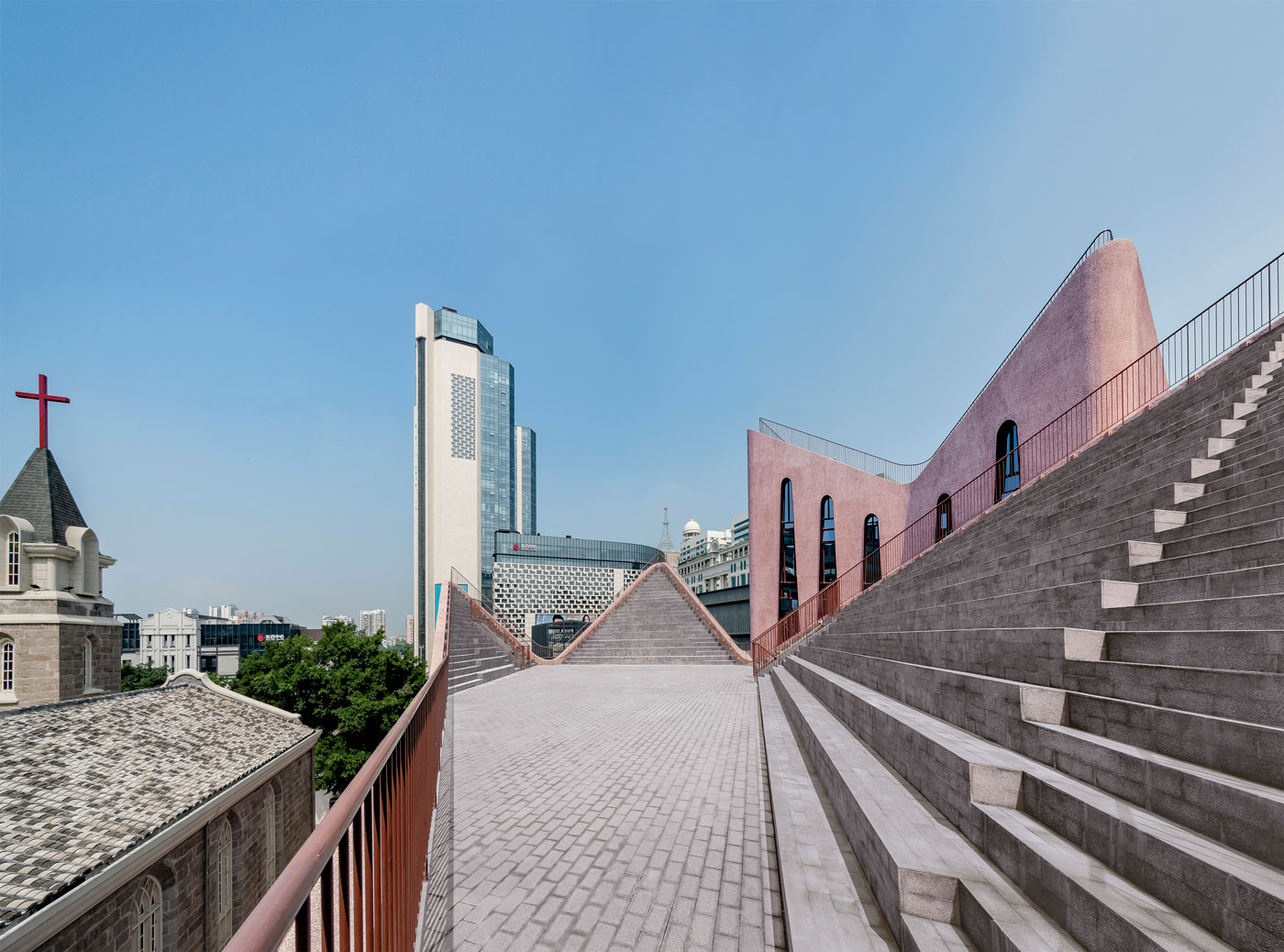
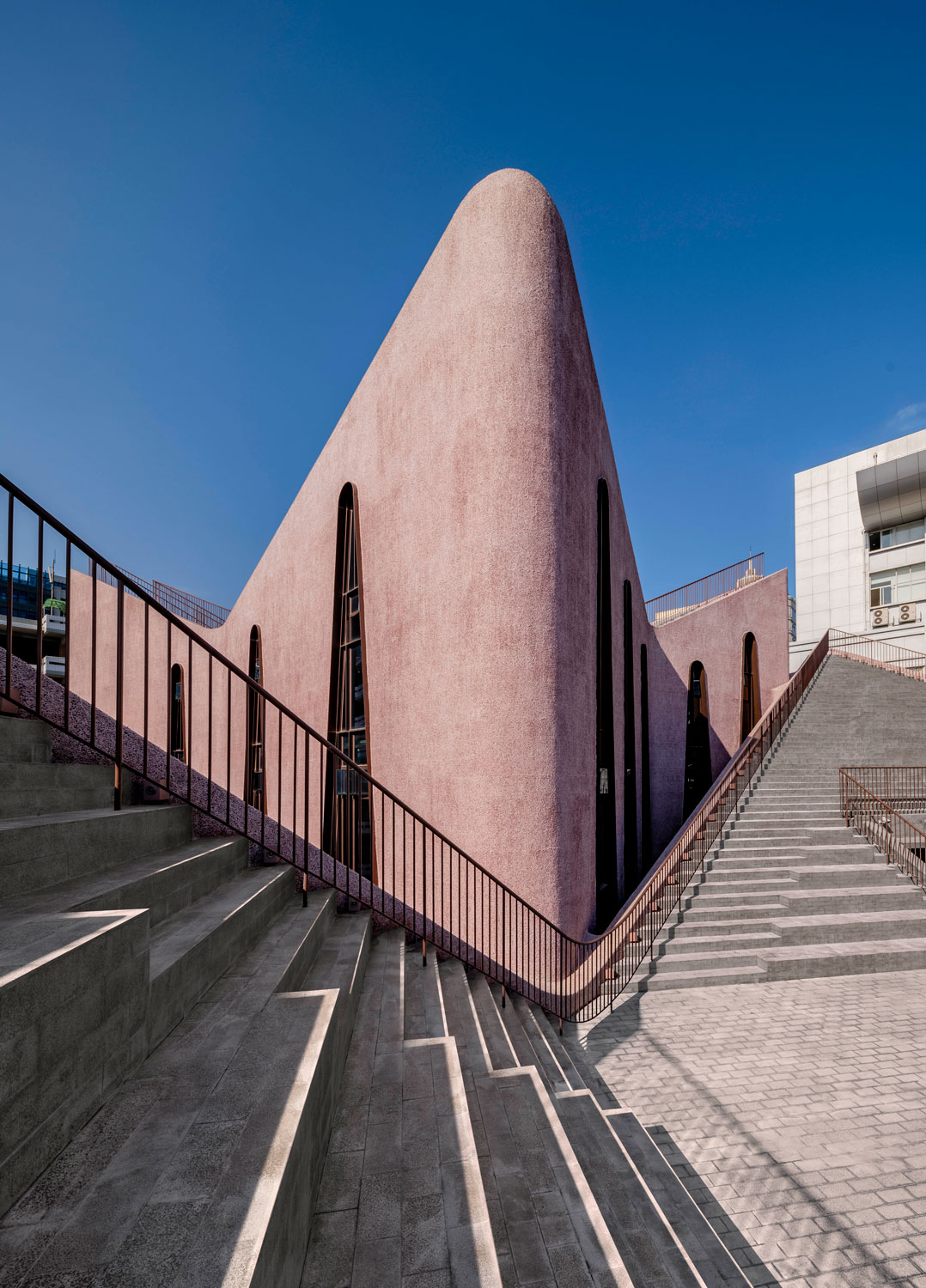
Harmonizing Evolution: Rethinking Tradition to Embody a Changed Self-Perception
Our design convinced client and authorities alike, as it harmonizes such imbalances by adopting the role of an urban mediator: Subtly folding its contours and modulating its vertical development in a continuous up-and-down movement, the volume is visually scaled down into fragments, allowing this seven-times larger structure to relate in proportion and silhouette to the tiny church at its side. The fragments decrease in height the closer they are to the historic building, showcasing its bell tower and evoking the impression of an organically grown skyline.
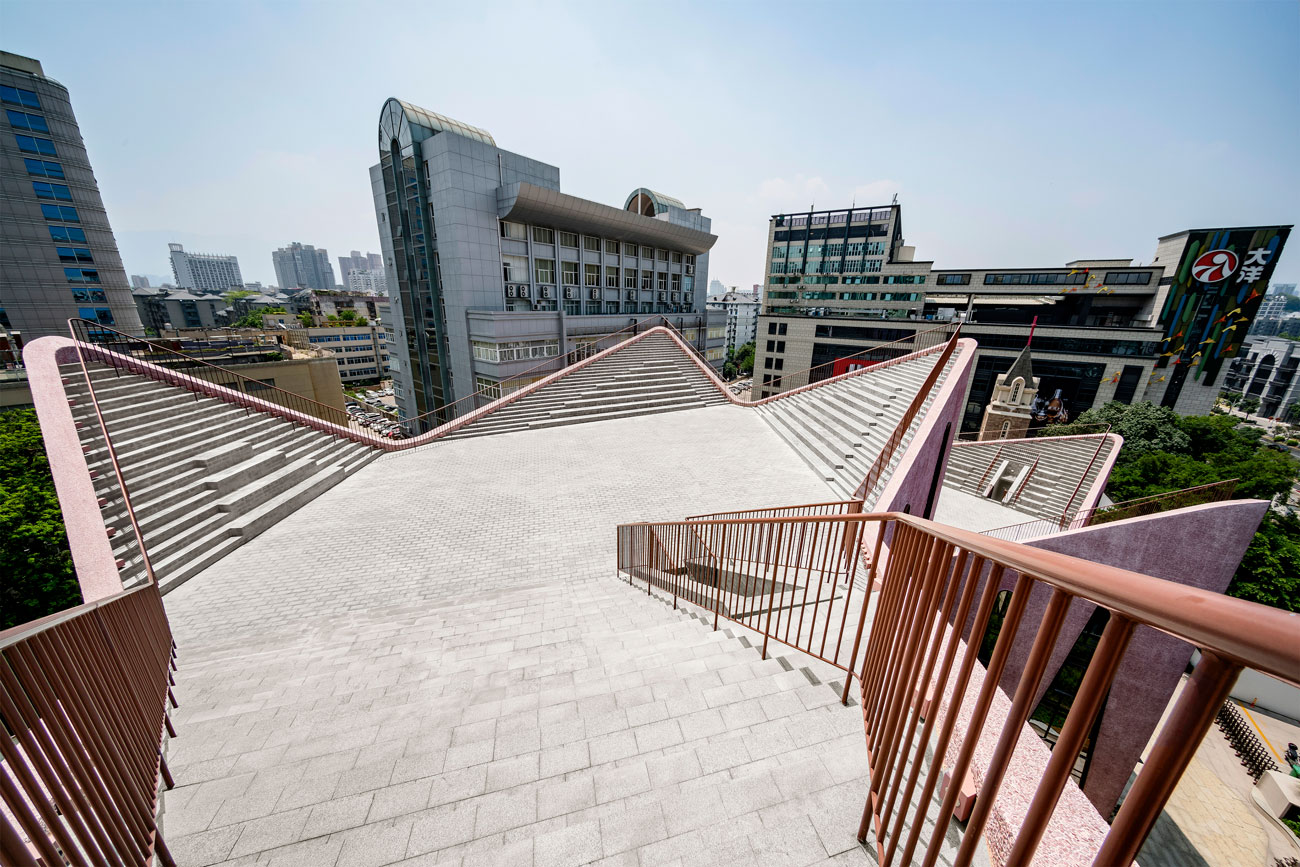
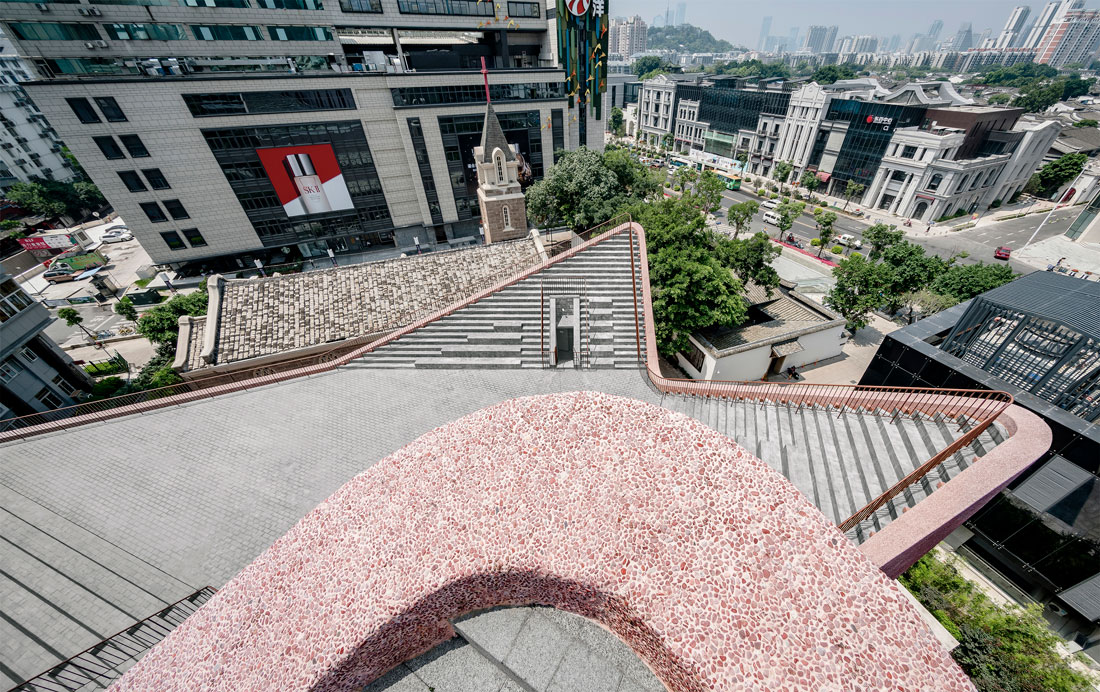
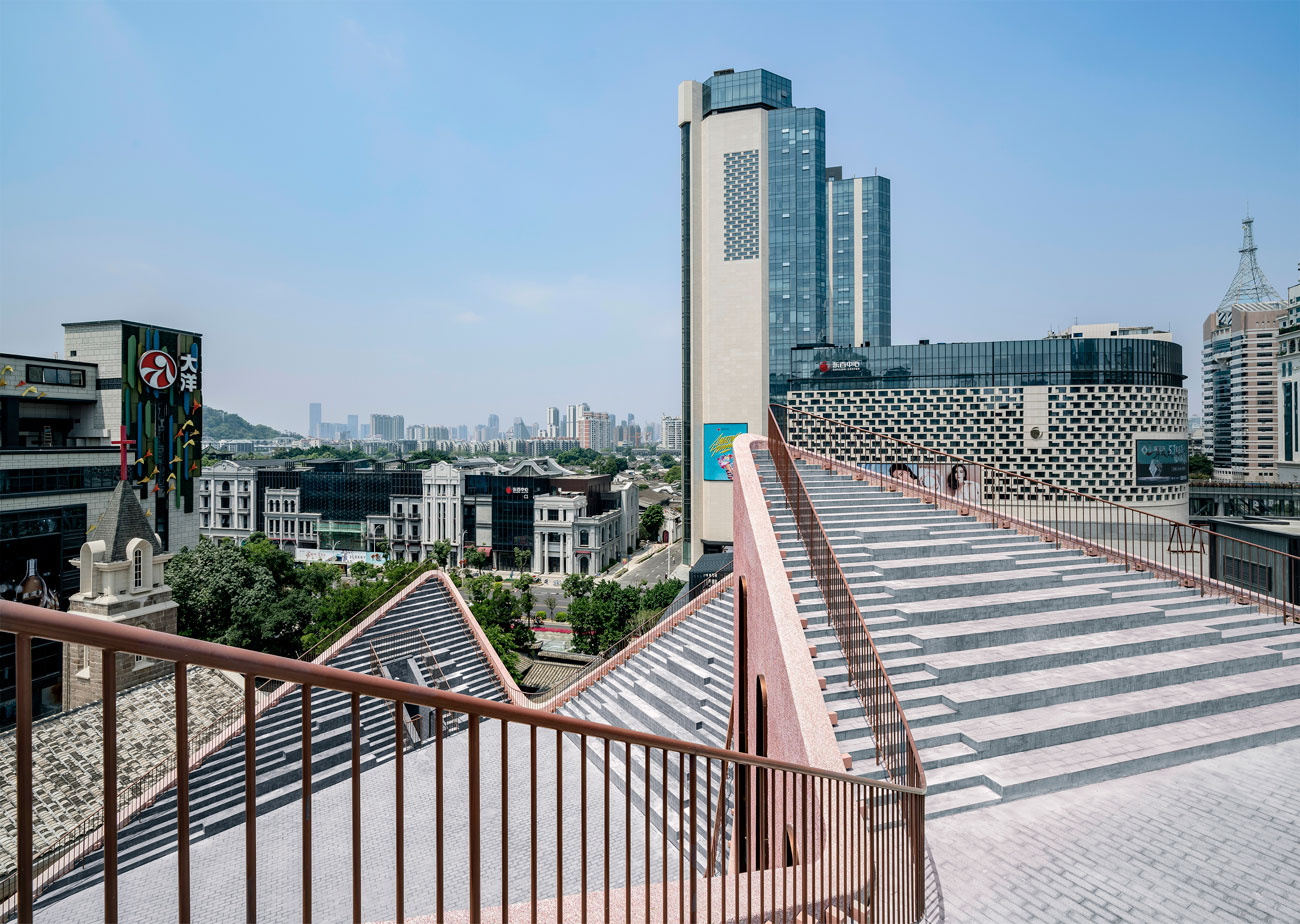
The community centre’s façade makes a visual counterstatement to the gloss and shine of the curtain walls encircling it. It is finished in a red granite similar to the old church’s – tumbled down to smooth pebbles and applied to the walls using a pebble dash technique once typical for the local architecture and now almost entirely forgotten. In a religious sense, this infinitude of pebbles translates into matter the dual nature of the word “Church”, which refers not only to the single building itself but also to the sum of all individual Christians which compose it. On a human level, it gives the Community Centre a haptic quality, warm and comforting to the human hand and always provoking a smile on the faces of adults and children who touch it. Aesthetically, it showcases the beauty that one can find in supposedly outdated materials, traditional techniques and handcraft, and proves that in an environment of extremes, sometimes humility stands out most clearly.
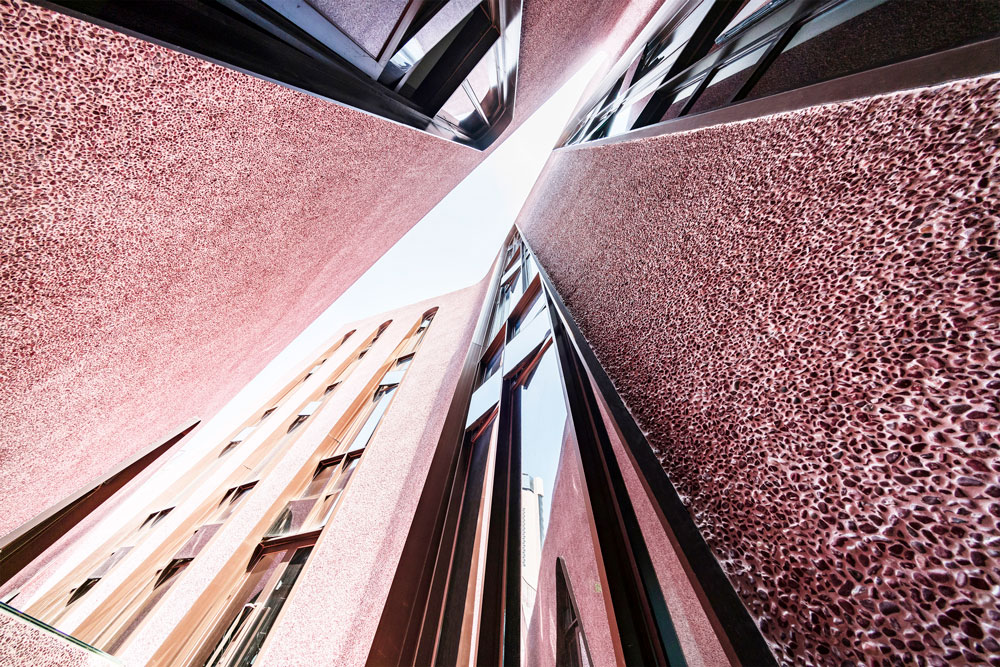
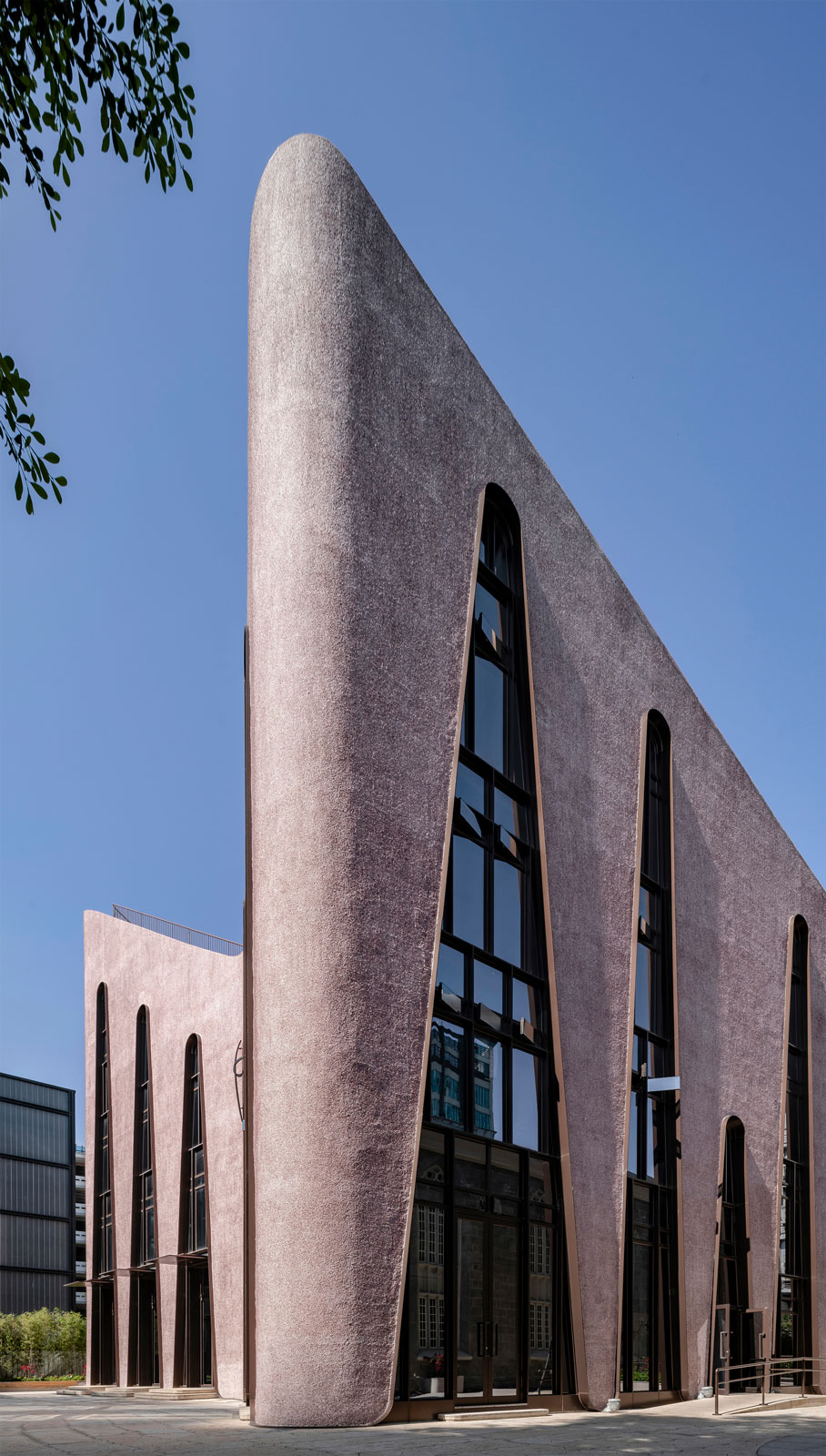
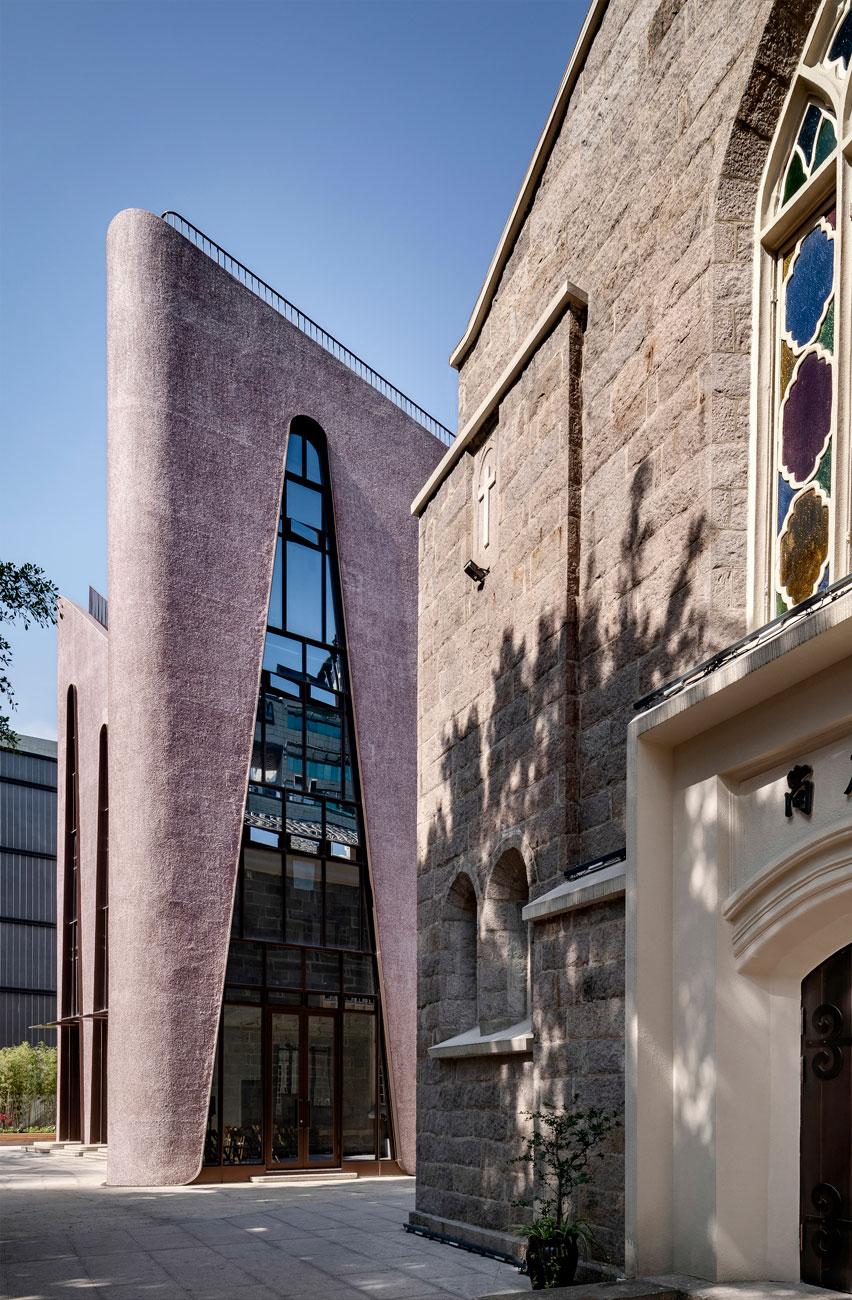
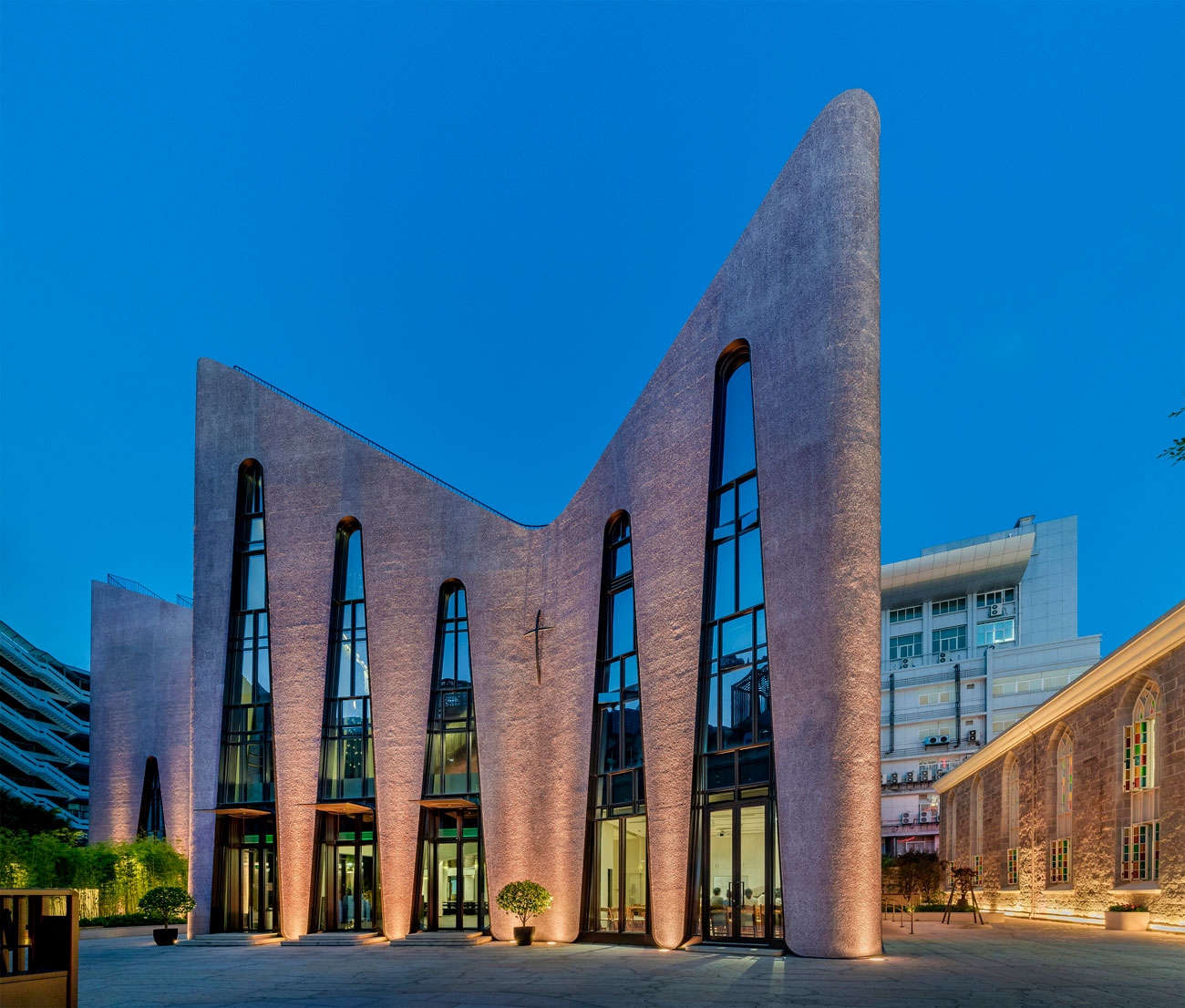
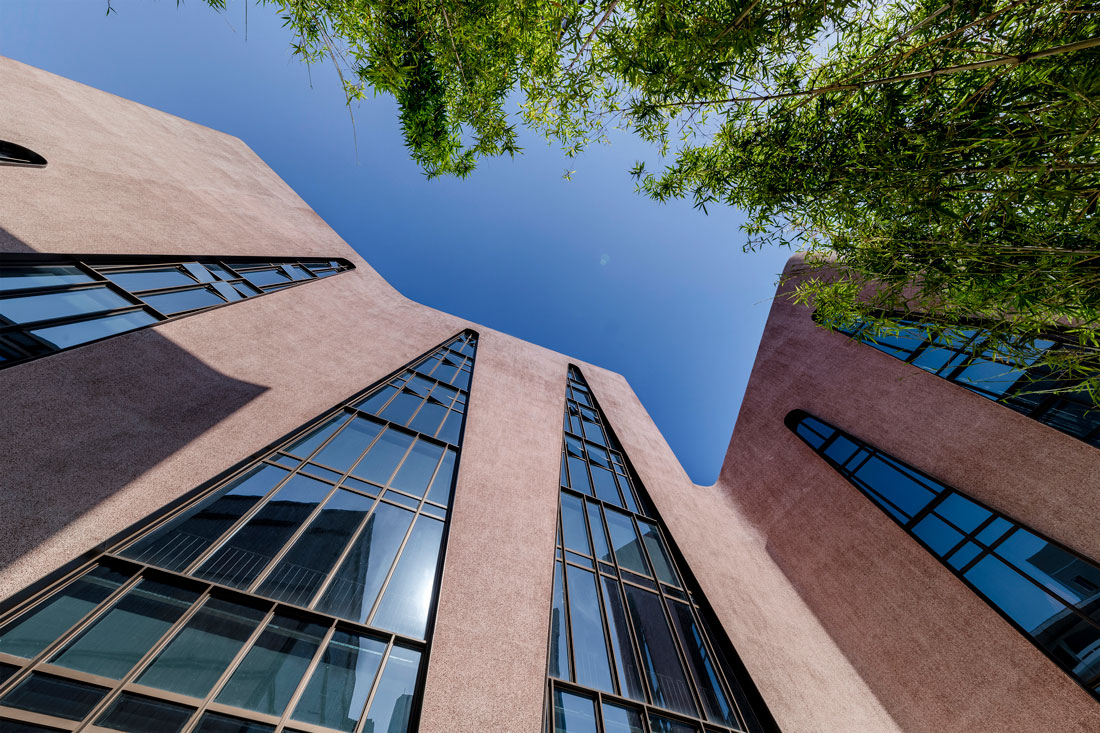
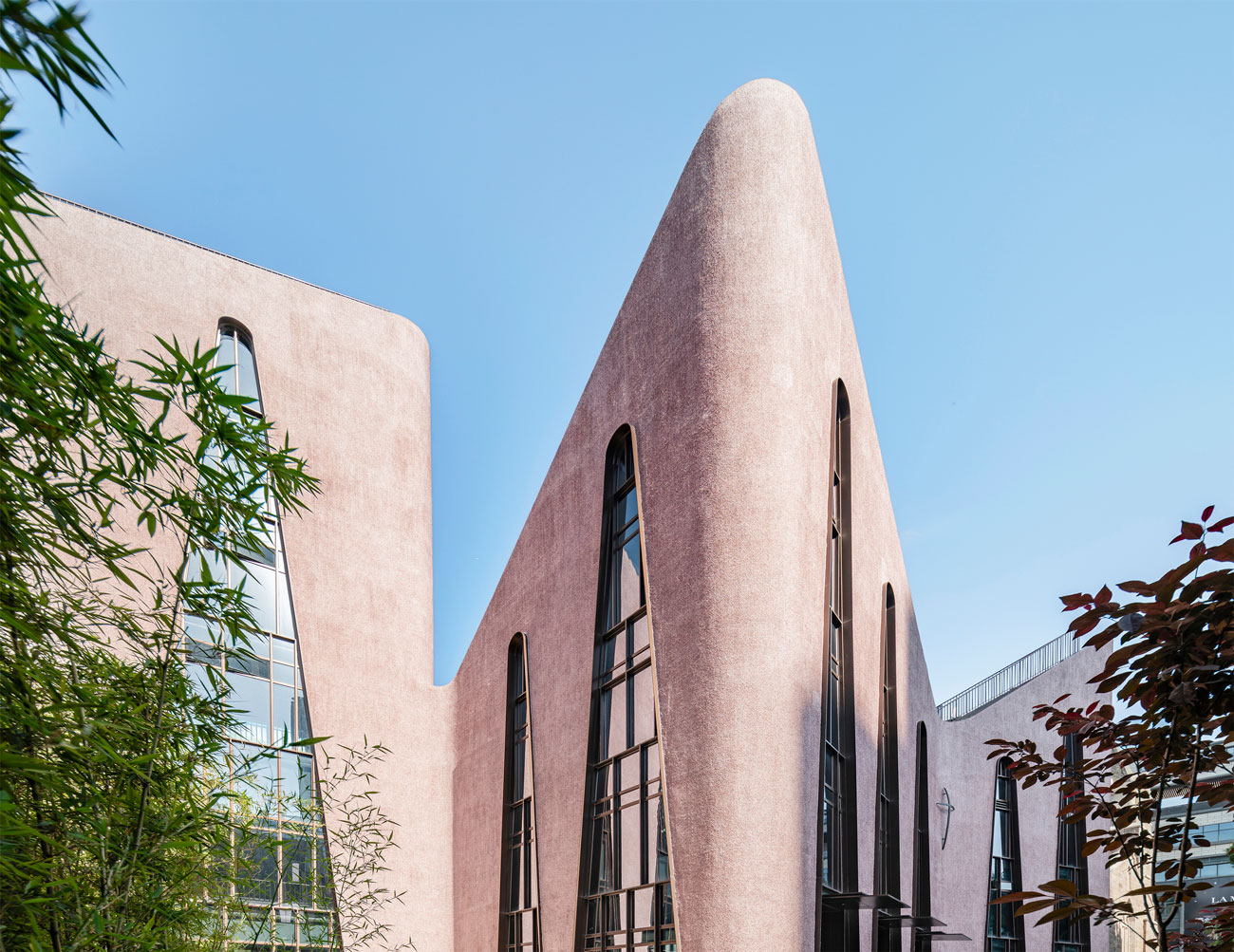
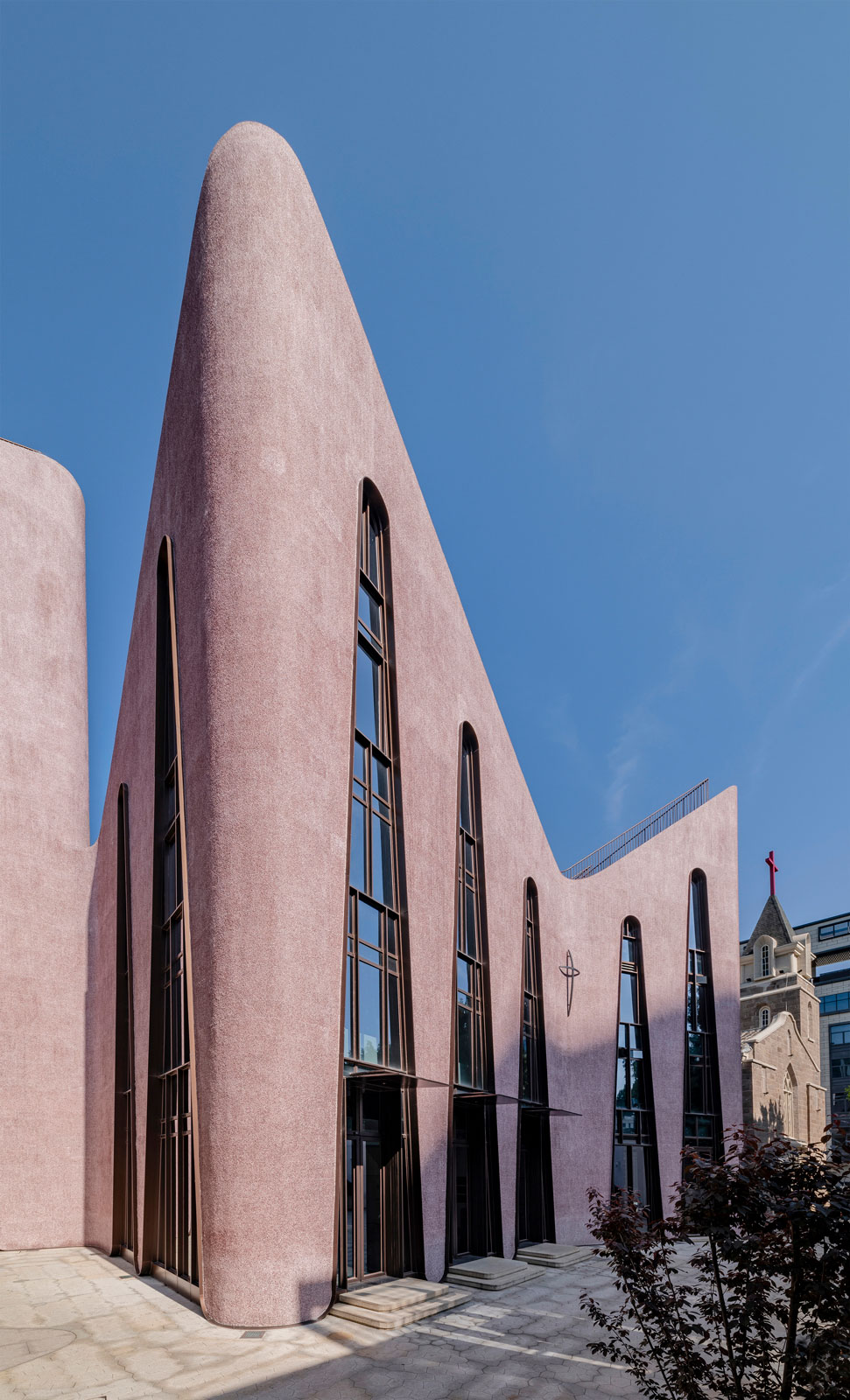
Functionally, the organization of the building corresponds to the client’s needs by providing a range of multifunctional spaces. As a central piece of this strategy, the rooftop areas are conceived as publicly accessible open-air amphitheaters allowing the community to hold outdoor assemblies or enjoy being elevated from the worries of the world below. Seen from the neighbouring buildings, however, it constitutes a dramatic stage of urban proportions, upon which the community demonstrates its faith and shares its joy with the city. The new community centre, therefore, embodies a change in the congregation’s self-perception and in their mission as Chinese Christians: from a protective minority that hid in seclusion, to a community that now wants to be visible, open its heart to the world, reach out and invite to join. Only a few months after completion, the community centre has already become a popular hang-out place for the youth and serves as viewing platform from which locals and tourists enjoy an unobstructed view onto the city’s historic district.
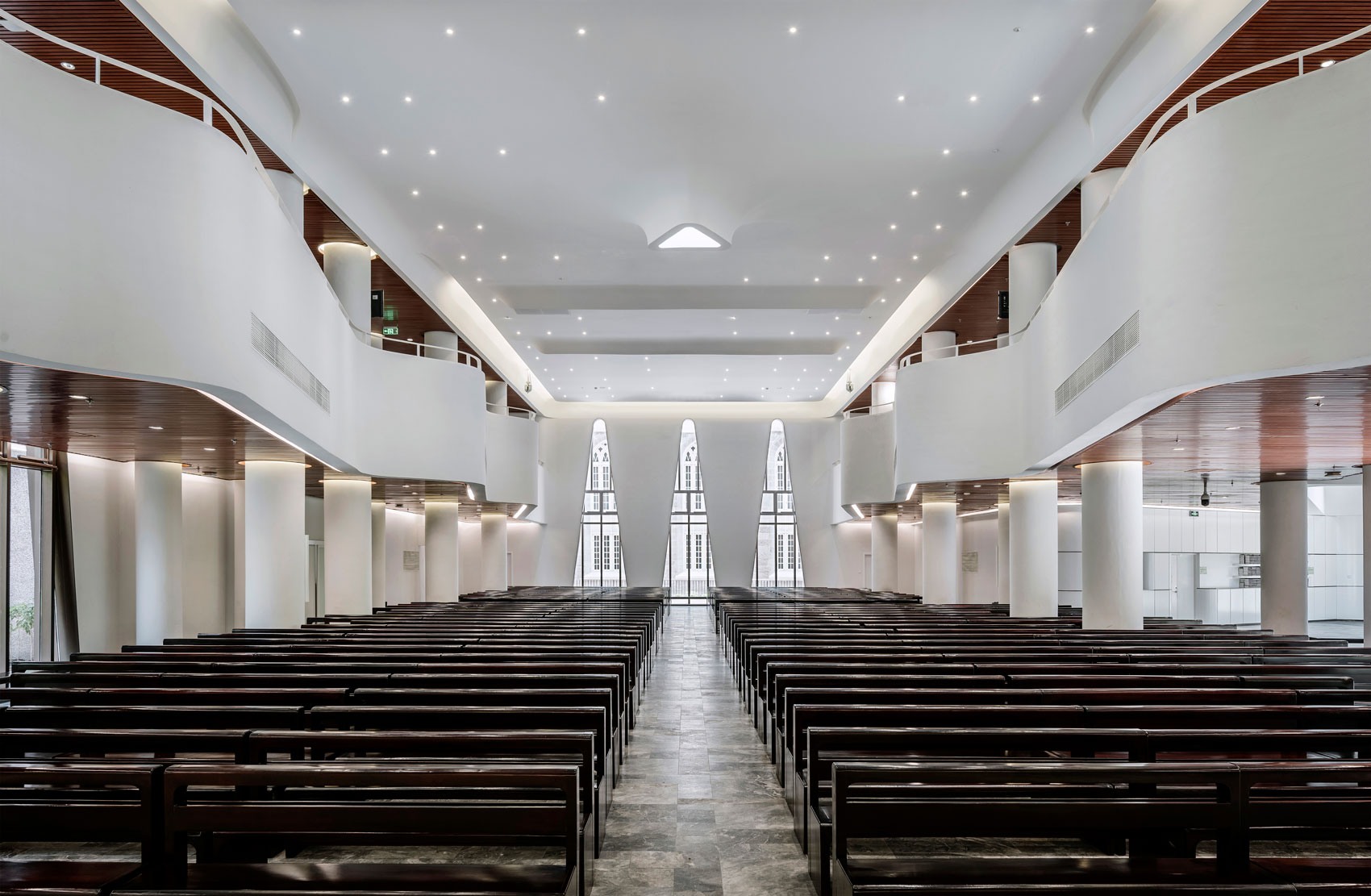
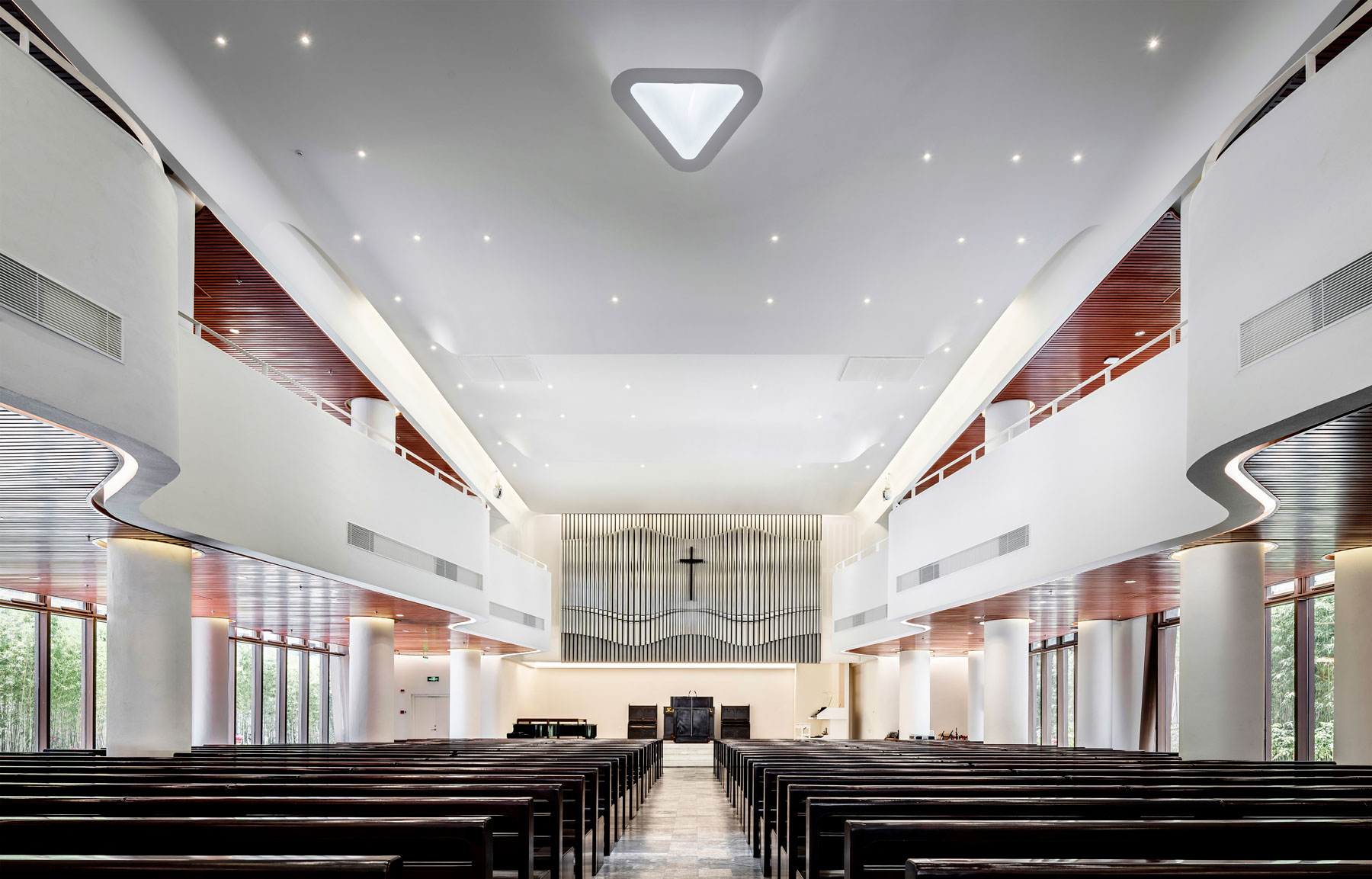
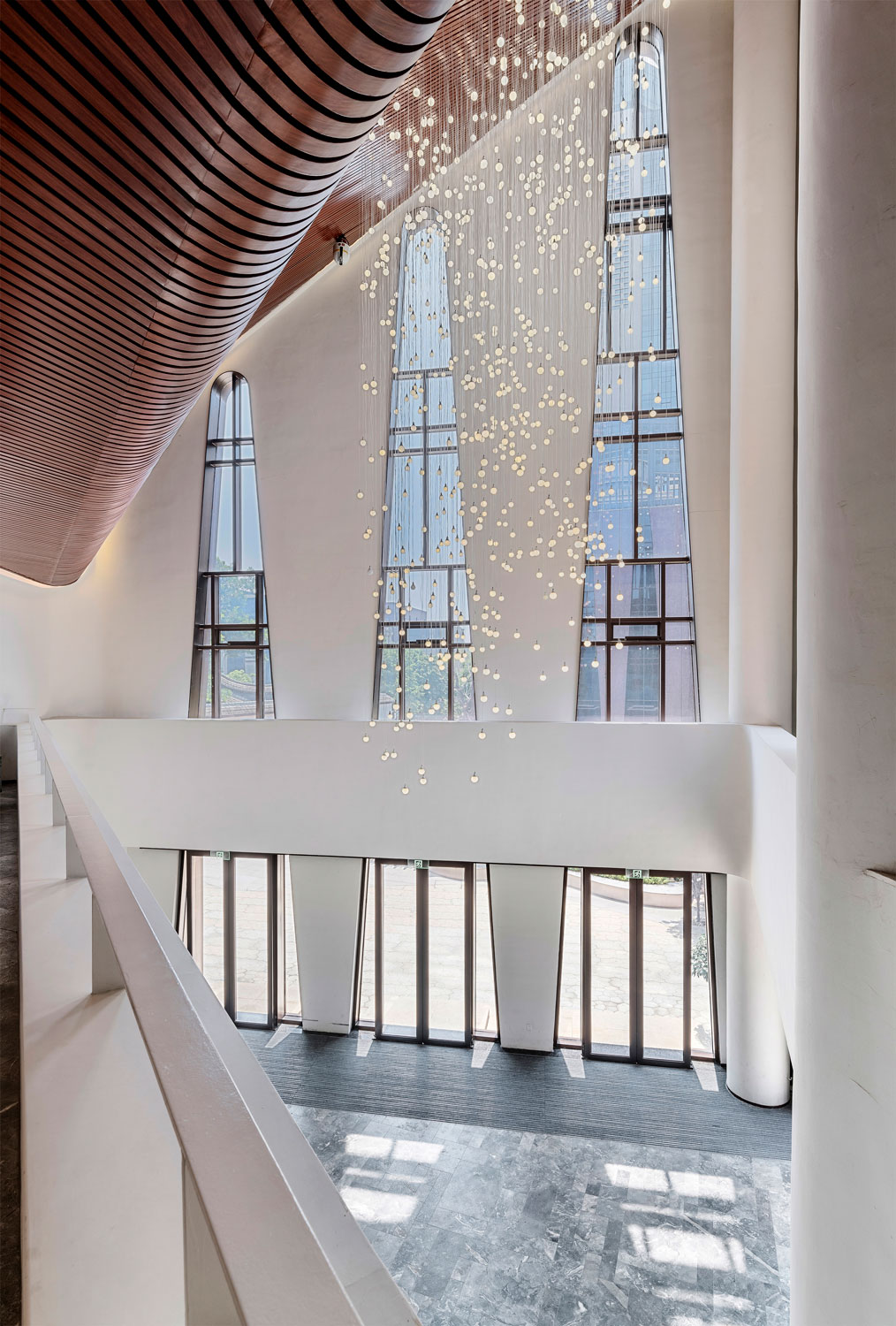
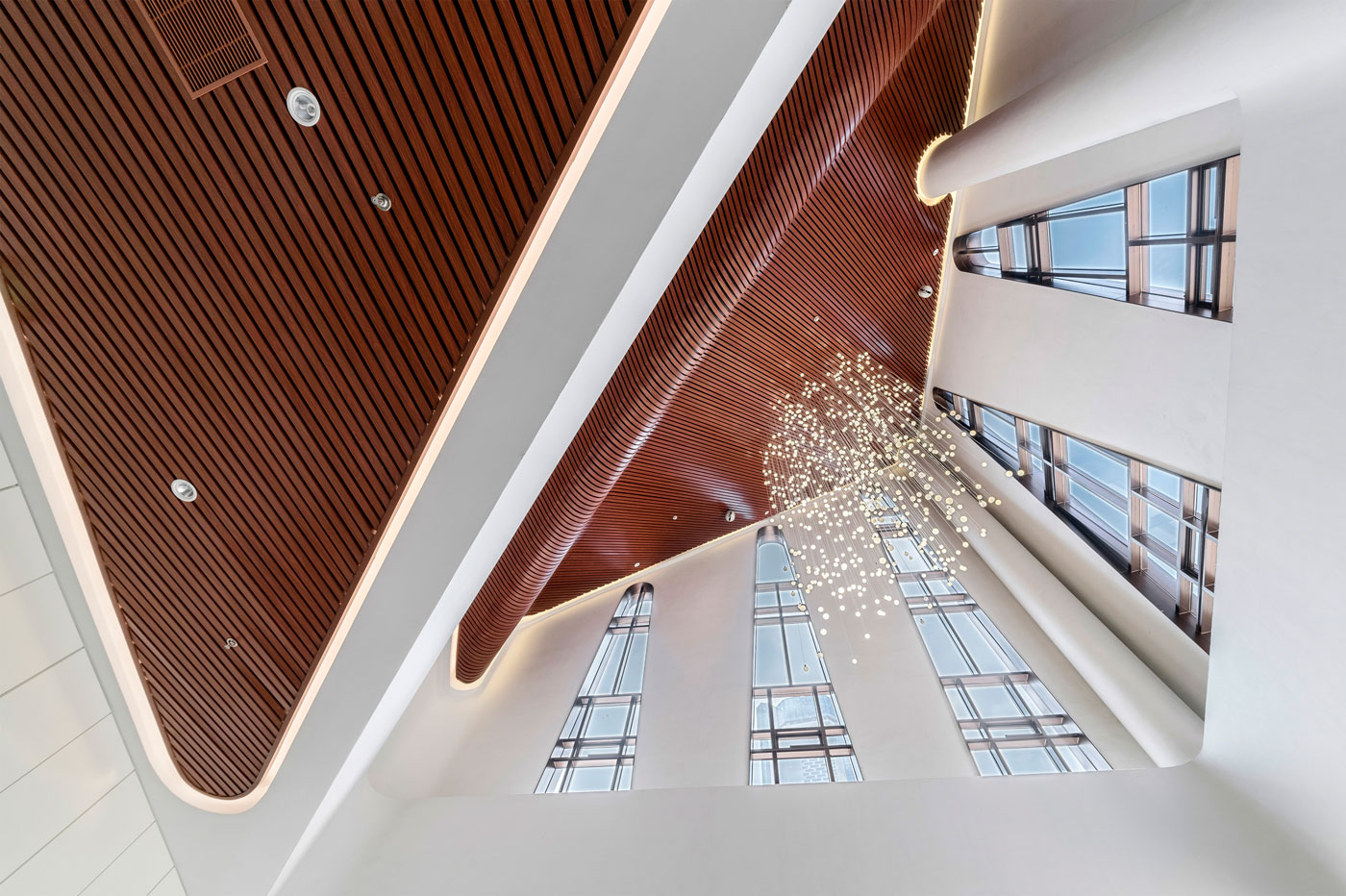
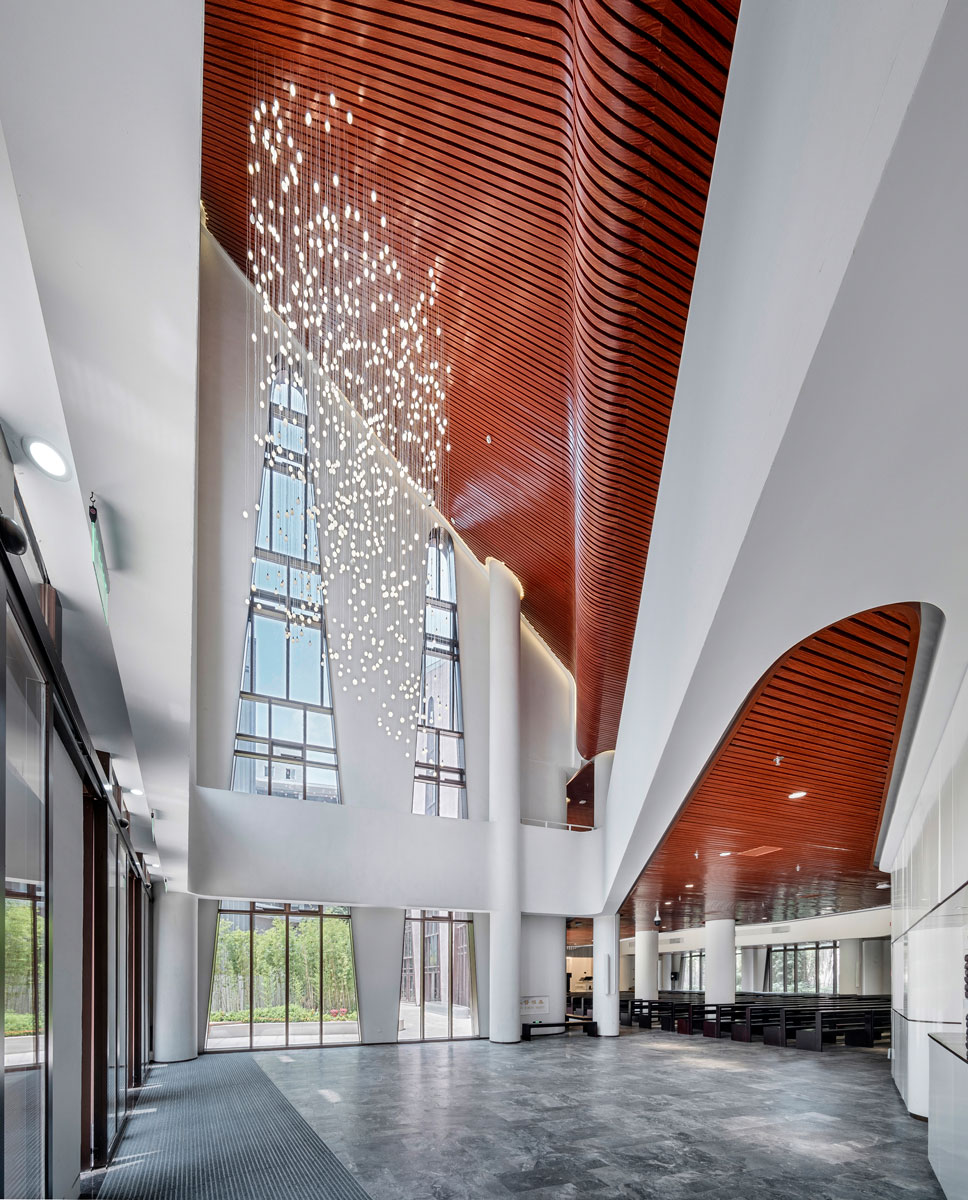





2 Comments